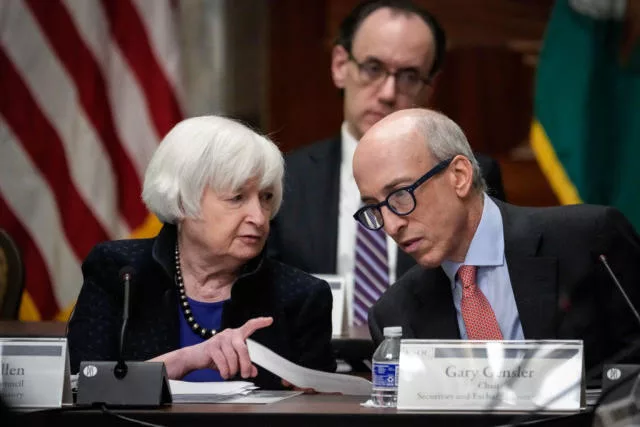Commercial Real Estate Identified as Top Financial Risk to the U.S. Economy, says Financial Stability Oversight Council
In its recently released annual report, the Financial Stability Oversight Council (FSOC) has identified commercial real estate as the foremost financial risk to the United States economy. The council’s findings highlight the potential vulnerabilities within this sector and emphasize the need for proactive measures to mitigate the associated risks. This article delves into the FSOC’s report, shedding light on the implications of this designation and the importance of addressing these concerns promptly.
FSOC Report Highlights Commercial Real Estate as a Major Concern
The FSOC’s annual report, published on Thursday, underscores the significance of commercial real estate as a potential threat to the stability of the U.S. economy. This designation places commercial real estate at the top of the council’s list of financial risks, indicating its potential impact on various sectors and markets.
Vulnerabilities in Commercial Real Estate Sector
The FSOC report outlines several vulnerabilities within the commercial real estate sector that contribute to its designation as a top financial risk. These vulnerabilities include:
Overvaluation:
The council expresses concern over the possibility of overvaluation in commercial real estate markets, which could lead to a sudden decline in property values. Such a decline could trigger a chain reaction of financial instability, impacting investors, lenders, and other stakeholders.
High Debt Levels:
The report highlights the substantial debt levels associated with commercial real estate investments. Excessive borrowing within this sector increases the likelihood of defaults and loan delinquencies, potentially causing significant disruptions in the financial system.
Liquidity Risks:
The FSOC emphasizes the potential liquidity risks associated with commercial real estate investments. In times of economic downturns or market stress, investors may face difficulties in selling their properties or accessing capital, leading to a further decline in market stability.
Implications for the U.S. Economy
The FSOC’s identification of commercial real estate as the primary financial risk to the U.S. economy has significant implications for various stakeholders. These implications include:
Economic Slowdown:
A downturn in the commercial real estate sector can have a cascading effect on other industries, leading to an overall economic slowdown. Reduced construction activity, declining property values, and increased loan defaults can all contribute to a contraction in economic growth.
Financial System Stability:
The FSOC report highlights the potential impact of commercial real estate risks on the stability of the financial system. Lenders and investors heavily exposed to this sector may face significant losses, potentially triggering a broader financial crisis.
Job Market Concerns:
Commercial real estate plays a vital role in job creation, particularly in construction and related industries. Any disruptions in this sector can lead to job losses and increased unemployment rates, further straining the economy.
Addressing Commercial Real Estate Risks
To mitigate the potential risks associated with commercial real estate, the FSOC report suggests several measures that should be considered:
Enhanced Monitoring:
The council recommends increased monitoring of commercial real estate markets to identify early signs of vulnerabilities and prevent potential crises.
Strengthened Regulations:
The report emphasizes the importance of robust regulations to ensure responsible lending practices and discourage excessive risk-taking within the commercial real estate sector.
Stress Testing:
The FSOC suggests conducting stress tests to assess the resilience of financial institutions exposed to commercial real estate risks. This would help identify potential weaknesses and enable appropriate risk management strategies.
Conclusion:
The Financial Stability Oversight Council’s annual report serves as a wake-up call, highlighting commercial real estate as the primary financial risk to the U.S. economy. The vulnerabilities within this sector, including overvaluation, high debt levels, and liquidity risks, necessitate immediate attention and proactive measures. By closely monitoring the market, implementing stronger regulations, and conducting stress tests, policymakers can work towards safeguarding the stability of the financial system and mitigating the potential negative impacts on the broader economy.


